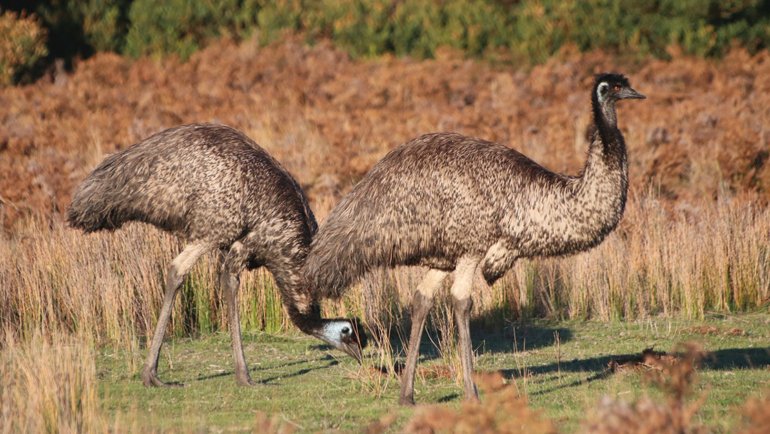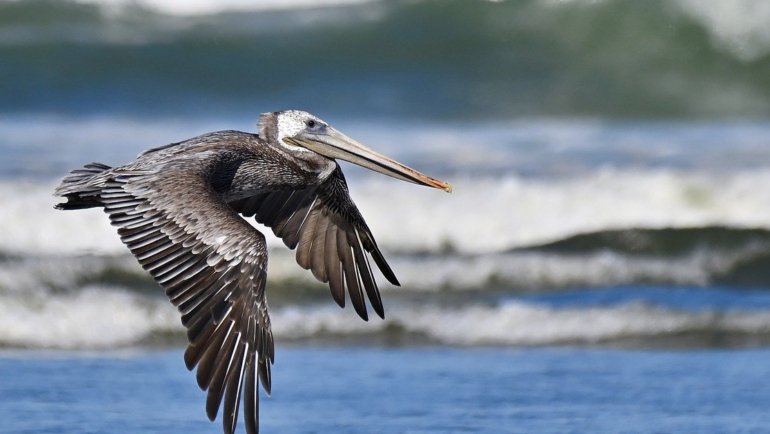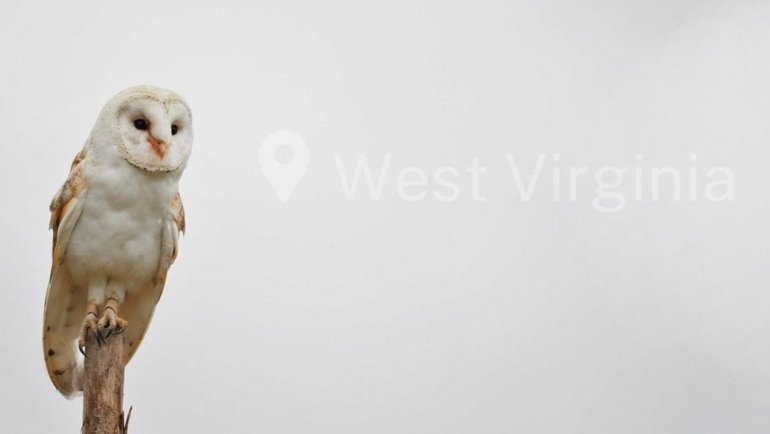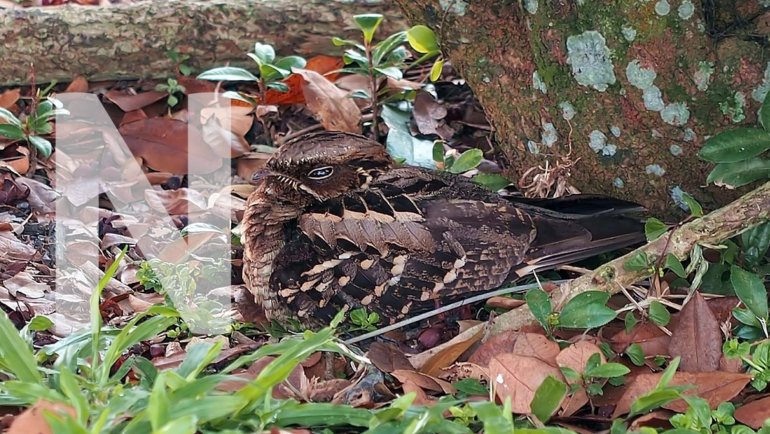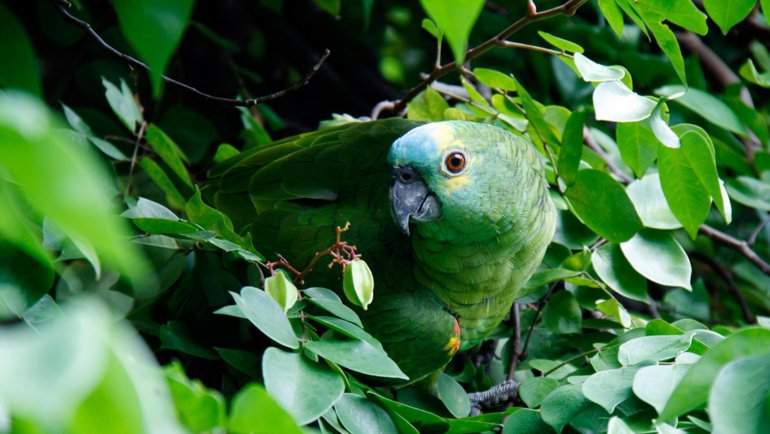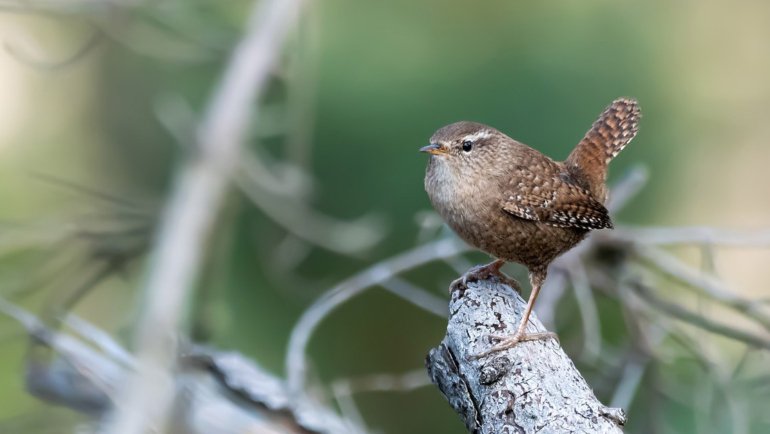Red – the color of love, power, and vibrant life. This fiery hue has captured human fascination throughout history, and nowhere is it more beautifully embodied than in nature’s canvas. A perfect case in point? Red parrots.
These stunning creatures, resplendent in their crimson plumage, not only offer a visual feast but also a compelling study of nature’s artistic prowess and biological diversity.
Whether you’re an avid birdwatcher, a potential parrot parent, or simply a nature enthusiast, join us as we explore the world of red parrots, their unique characteristics, and why they command our admiration.
Cardinal Lory
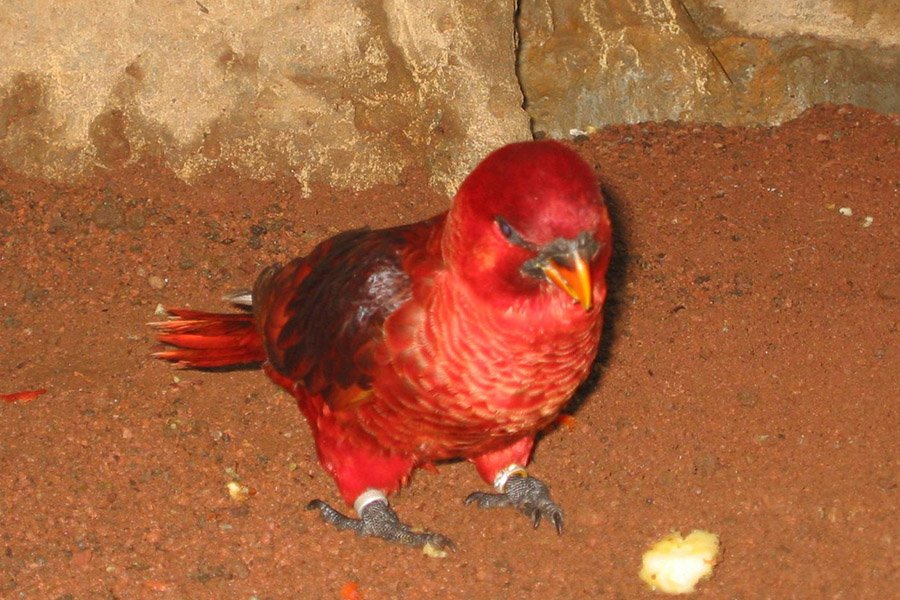
- Scientific Name: Chalcopsitta cardinalis
- Size: 12 inches (31 cm)
- Lifespan: Up to 28 years
- Where Found: Solomon Islands, Bougainville Island, and Papua New Guinea
The Cardinal Lory is an incredibly vibrant parrot species, primarily known for its stunning red plumage that exudes a velvety sheen. The intensity of their coloration varies, with some birds displaying more orange hues, while others lean towards a deeper red. Their cheeks, thighs, and wing coverts are typically adorned with a contrasting blue, which further enhances their striking appearance.
Cardinal Lories are generally sociable and active, spending most of their day foraging for food. Their diet mainly consists of nectar, pollen, and fruits, aligning with their status as lory parrots, who are known for their specialized brush-tipped tongues for feeding on nectar.
These birds are intelligent, playful, and can be quite vocal, making them popular in aviculture. However, they require dedicated care, including a specific diet and plenty of social interaction, to thrive in captivity.
Did you know? Despite their bright red appearance, Cardinal Lories are actually quite adept at camouflaging themselves among the red tropical flowers while feeding, illustrating nature’s fascinating interplay between form and function.
Chattering Lory

- Scientific Name: Lorius garrulus
- Size: 12 inches (30 cm)
- Lifespan: 15-30 years
- Where Found: North Maluku, Indonesia
The Chattering Lory, also known as the Yellow-backed Lory, is a stunning parrot known for its radiant red plumage and distinctive yellow mantle that stretches from its upper back to the back of its neck. The contrast between the two colors creates a striking visual that makes this species stand out in the lush forests of Indonesia.
Active, social, and known for their playful nature, Chattering Lories live up to their name by being quite vocal. They’re considered excellent pets due to their affectionate demeanor and can learn to mimic a range of sounds. However, potential owners should be prepared for their high energy levels and tendency to chatter.
In the wild, these birds feast on a diet of fruit, nectar, and pollen, similar to other Lory species. Unfortunately, due to habitat loss and trapping for the pet trade, they’re currently listed as vulnerable on the IUCN Red List.
Did you know? Chattering Lories are known to exhibit a behavior called “beak grinding,” a contented sound created when they slide their top beak over their bottom beak, usually indicating that they’re relaxed and ready for sleep.
Crimson Rosella
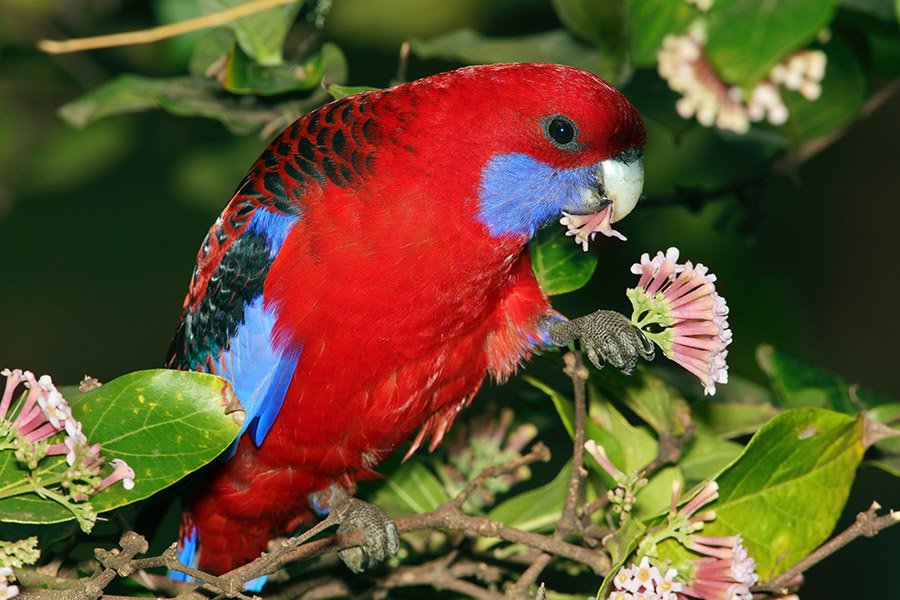
- Scientific Name: Platycercus elegans
- Size: 10-14 inches (25-36 cm)
- Lifespan: Up to 20 years
- Where Found: East and Southeast Australia
Crimson Rosellas are elegant parrots that are easy to identify due to their vibrant red plumage complemented by patches of blue and black on their wings and tail feathers. Their eye-catching coloration makes them one of the most recognizable birds in their native Australia.
Crimson Rosellas are relatively quiet compared to other parrots, making them excellent pets for those living in noise-sensitive areas. However, they can be somewhat shy, preferring to keep their distance until they’ve had ample time to familiarize themselves with their surroundings.
In the wild, they inhabit forests and woodlands, where they feed primarily on seeds, fruits, and insects. Despite their popularity in aviculture, they maintain a stable population in their native habitat, contributing to the rich biodiversity of the Australian landscape.
Did you know? Young Crimson Rosellas have green plumage to blend into their surroundings and protect against predators. As they mature, they undergo a dramatic color change, turning into the splendid crimson adults they’re known to be.
Female Eclectus Parrot
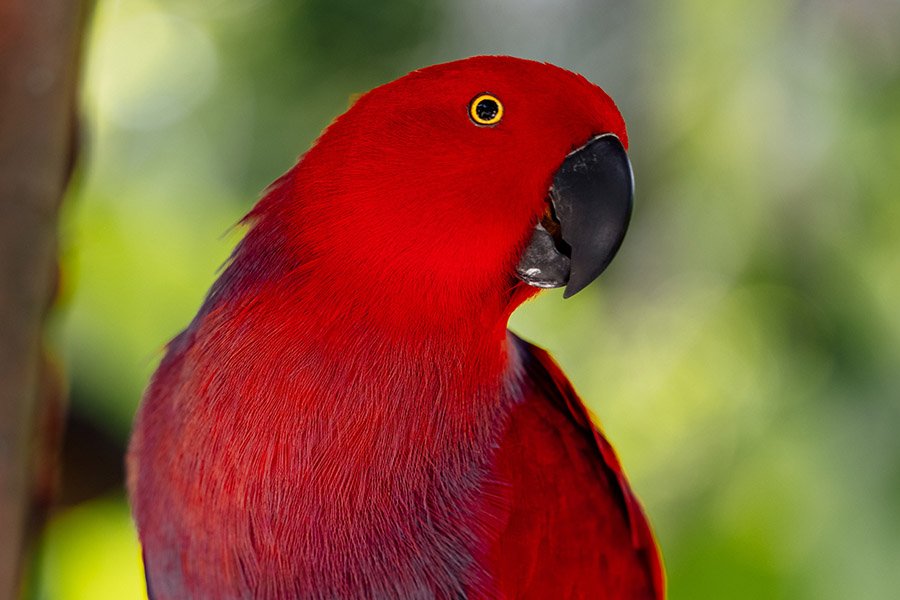
- Scientific Name: Eclectus roratus
- Size: 17-20 inches (43-52 cm)
- Lifespan: Up to 30 years
- Where Found: Solomon Islands, New Guinea, northeastern Australia
Eclectus Parrots are renowned for their extreme sexual dimorphism, where males and females have vastly different appearances. The Female Eclectus Parrot is a sight to behold with her brilliant red and purple plumage. In contrast, the males are predominantly green, making them one of the most distinct parrot species in the world.
The Female Eclectus boasts a regal deep red and purple plumage, with a darker hue on the wings and back. Her striking blue eye-ring further accentuates her beauty. These parrots are intelligent and known for their excellent speech mimicry, making them sought after in aviculture.
In the wild, they inhabit tropical rainforests where their vibrant colors blend seamlessly with the rich flora. They feed on a diet of fruits, nuts, seeds, and blossoms.
Did you know? The strikingly different colors between male and female Eclectus Parrots once led scientists to believe they were separate species!
Purple-Naped Lory
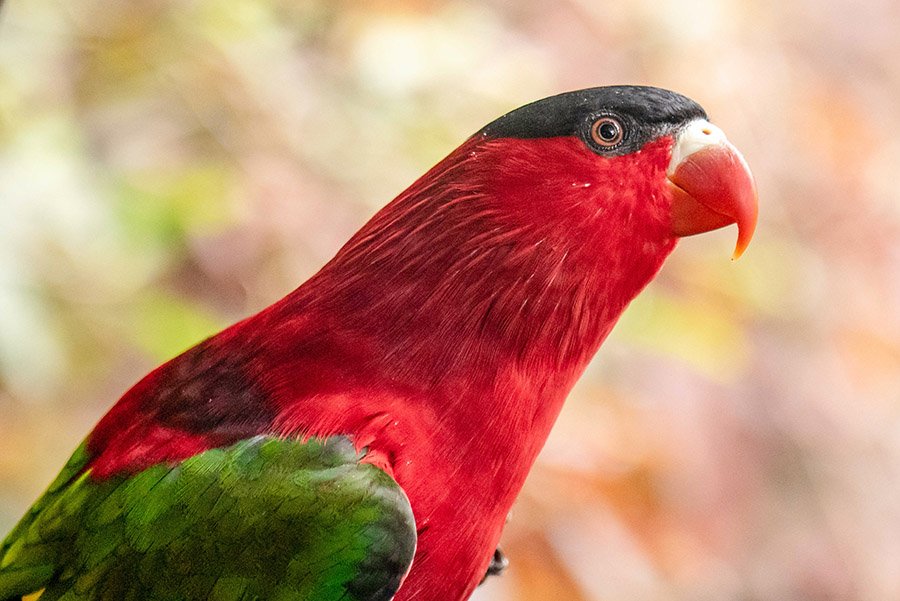
- Scientific Name: Lorius domicella
- Size: 11 inches (28 cm)
- Lifespan: 28-32 years
- Where Found: Indonesia
The Purple-Naped Lory, as its name suggests, is notable for its bright red plumage contrasted with a distinctive purple patch on the back of its neck. It also has green wings and a blue tail, making it an exceptionally colorful and visually appealing species.
Active and playful, these birds are sociable and can form strong bonds with their human caregivers, if kept as pets. However, their need for social interaction, along with their loud voices, means they require dedicated care and may not be suitable for all households.
In their natural habitat, Purple-Naped Lories, like other Lory species, mainly feed on nectar, pollen, and fruits. Sadly, their populations are declining due to habitat loss and illegal capture for the pet trade.
Did you know? The Purple-Naped Lory is one of the more quiet Lory species, making them a more suitable choice for individuals interested in owning a Lory but are concerned about noise levels.
Moluccan King Parrot
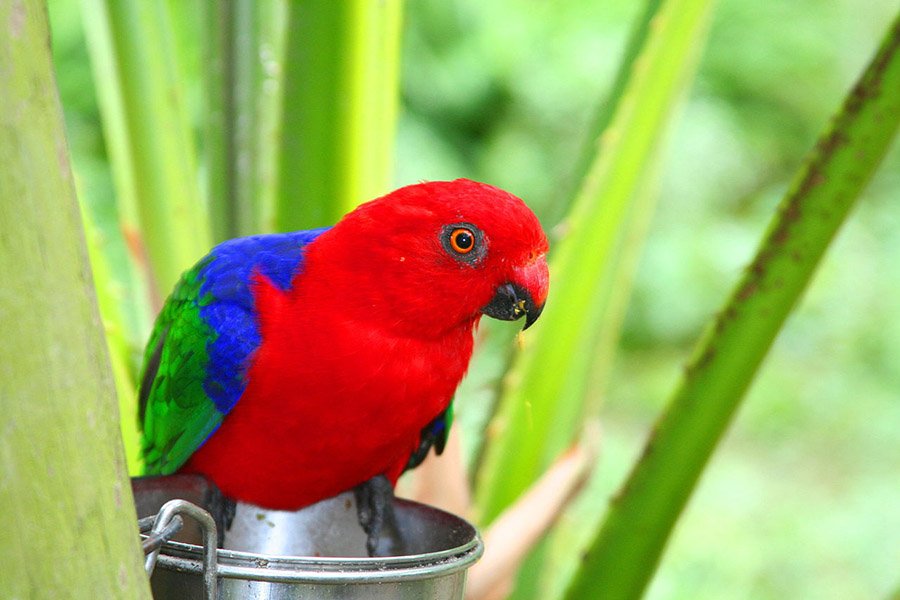
- Scientific Name: Alisterus amboinensis
- Size: 14-17 inches (35-43 cm)
- Lifespan: Up to 25 years
- Where Found: Moluccas and West Papua in Indonesia, Papua New Guinea
With its fiery red head and chest set against a contrasting deep green body, the Moluccan King Parrot is nothing short of majestic. Its natural range is the lush, tropical rainforests where it feeds on a diet of fruits, seeds, and small insects.
Despite their striking appearance, these parrots are relatively shy and prefer to stay hidden in the dense forest canopy. As pets, they are generally calm and docile, but they require a spacious environment and plenty of stimulation to stay healthy and content.
Did you know? The Moluccan King Parrot is also called the “Ambon King Parrot” or “Amboina King Parrot,” named after Ambon Island in Indonesia, which is part of its native range.
Red and Blue Lory
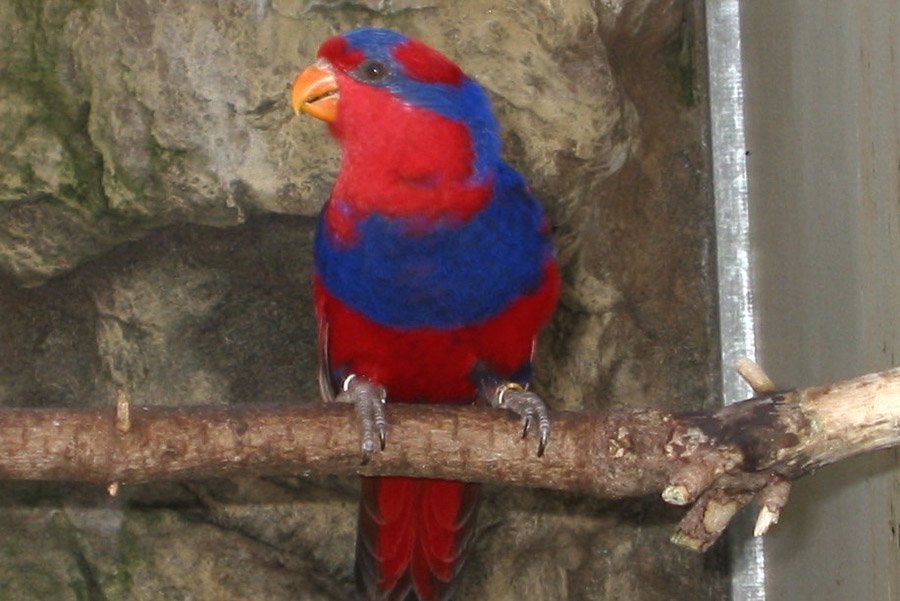
- Scientific Name: Eos histrio
- Size: 10 inches (26 cm)
- Lifespan: Up to 30 years
- Where Found: Talaud Islands and Sangihe Islands, Indonesia
The Red and Blue Lory, sometimes known as the Maroon-and-blue Lory or Red Lory, is a stunning bird with its scarlet-red plumage and striking blue streaks on its cheeks and thighs. It also features a blue-black tail, adding to its vivid color palette.
In their native habitat, these birds are social creatures, often seen in large flocks. They feed on nectar, pollen, and fruits, like other Lory species. Despite being captivatingly beautiful, they are considered vulnerable due to habitat loss and trade.
Red and Blue Lories can make good pets for the right owners. They’re intelligent, active, and known for their playful antics. However, they can be noisy and require a specialized diet and plenty of social interaction.
Did you know? The Red and Blue Lory has a specialized brush-tipped tongue for efficiently extracting nectar and pollen from flowers. This adaptation makes them important pollinators in their ecosystem.
Red and Green Macaw
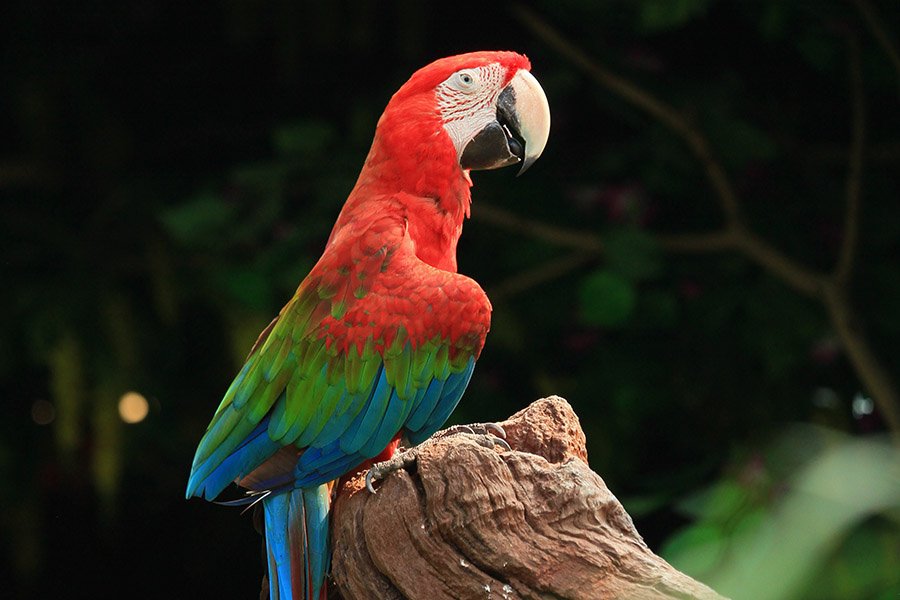
- Scientific Name: Ara chloropterus
- Size: 35-37 inches (90-95 cm)
- Lifespan: Up to 60 years
- Where Found: South America, from Panama to Paraguay
The Red and Green Macaw, also known as the Green-winged Macaw, is a large and stunning bird with primarily red plumage contrasted by bands of green and blue on its wings. Its intense color scheme is a remarkable sight to behold, making it one of the most beloved Macaw species.
These birds are incredibly intelligent, sociable, and known for their loud vocalizations, a characteristic that can make them a handful as pets. However, they are also incredibly affectionate and bond closely with their human caretakers.
In the wild, they inhabit a variety of forested habitats and feed on a diet of seeds, nuts, fruits, and even clay from riverbanks, which helps them detoxify any poisonous seeds they might have ingested.
Did you know? The Red and Green Macaw has an incredibly strong beak that can easily break a broomstick. It uses this powerful tool to crack open hard-shelled nuts and seeds.
Red Lory
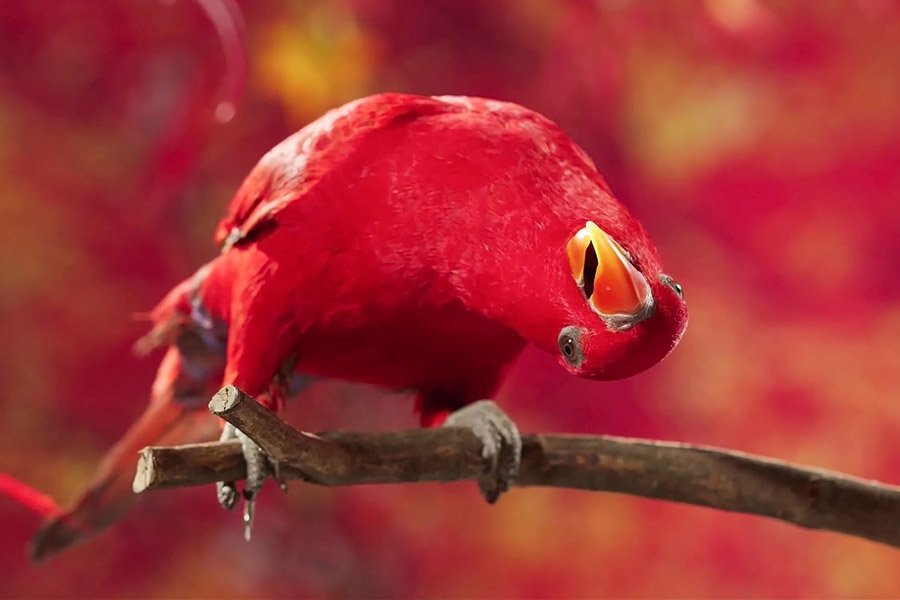
- Scientific Name: Eos bornea
- Size: 12 inches (31 cm)
- Lifespan: Up to 28 years
- Where Found: Indonesia and Papua New Guinea
The Red Lory, as its name suggests, is a stunning parrot entirely cloaked in radiant red, with hints of blue on its wings and face, and an orange-yellow bill. This parrot is indeed a fiery beauty, not just in looks but also in personality.
Red Lories are very active, intelligent, and sociable birds, known for their playful and mischievous nature. They love to be the center of attention and can become quite vocal if ignored.
In the wild, they live in tropical rainforests, coastal areas, and mangroves, where they feed primarily on nectar and pollen, with some fruits and seeds.
Did you know? Despite their beauty, Red Lories are known to be “messy” eaters. Their love for nectar can lead to splashes of food around their eating area, both in the wild and in captivity!
Scarlet Macaw
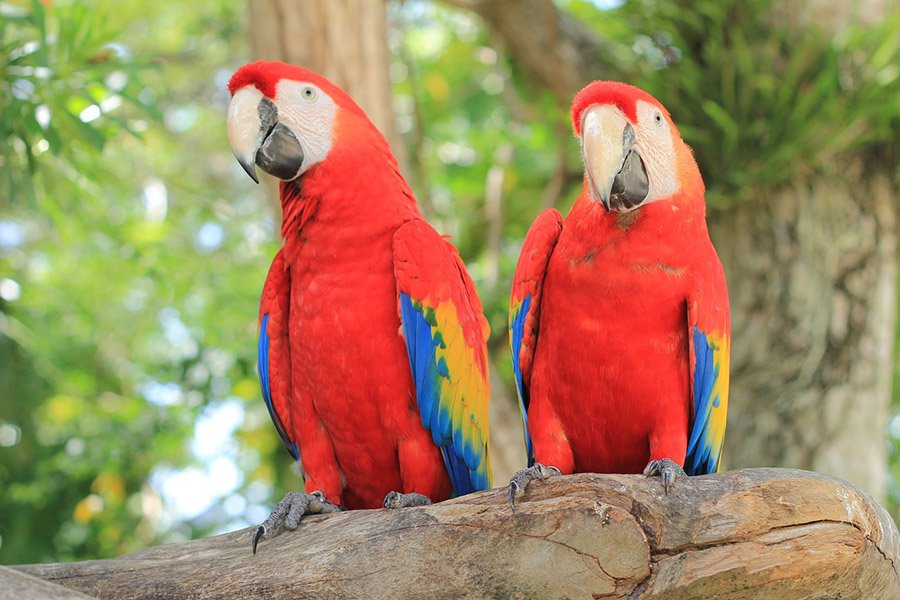
- Scientific Name: Ara macao
- Size: 32-36 inches (81-91 cm)
- Lifespan: Up to 75 years
- Where Found: Central and South America
The Scarlet Macaw is perhaps one of the most recognized and spectacularly colored members of the parrot family. These birds are brilliantly adorned with red, yellow, and blue feathers, although red is the dominant color, giving them their name.
In the wild, they inhabit humid evergreen forests and feast on a variety of fruits, nuts, and seeds. Scarlet Macaws are known for their intelligence and striking personality, displaying a curious and sociable nature.
As pets, they require a lot of mental and physical stimulation due to their active nature. With their capability to mimic human speech and sounds, they make interesting companions. However, potential owners should remember that these birds have a long lifespan and require dedicated care.
Did you know? Scarlet Macaws are monogamous, forming lifelong bonds with their partners. They are often seen flying in pairs or with their offspring.
Violet-Necked Lory
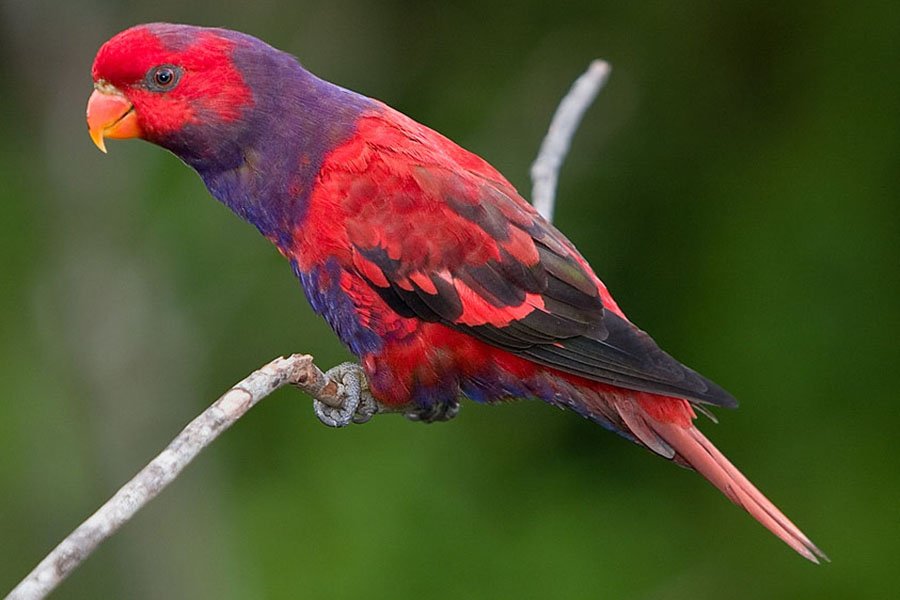
- Scientific Name: Eos squamata
- Size: 12 inches (30 cm)
- Lifespan: 20-30 years
- Where Found: Indonesia
The Violet-Necked Lory sports a fiery red body with a distinctive violet band around the neck, which gives this species its name. Its wings and tail are adorned with deep blue feathers, creating a vibrant and attractive contrast.
Violet-Necked Lories are social birds, usually found in pairs or small groups in their native habitat, the lowland forests and mangroves of Indonesia. They are nectarivorous, using their brush-tipped tongues to extract nectar and pollen from flowers.
In captivity, these lories are active and playful, known to form strong bonds with their caregivers. They do require a diet high in fresh fruits and specially-formulated nectar, along with plenty of interaction and stimulation to thrive.
Did you know? The Violet-Necked Lory’s beak changes color as it matures! Young birds have a black beak that gradually turns orange as they grow older.
Australian King Parrot
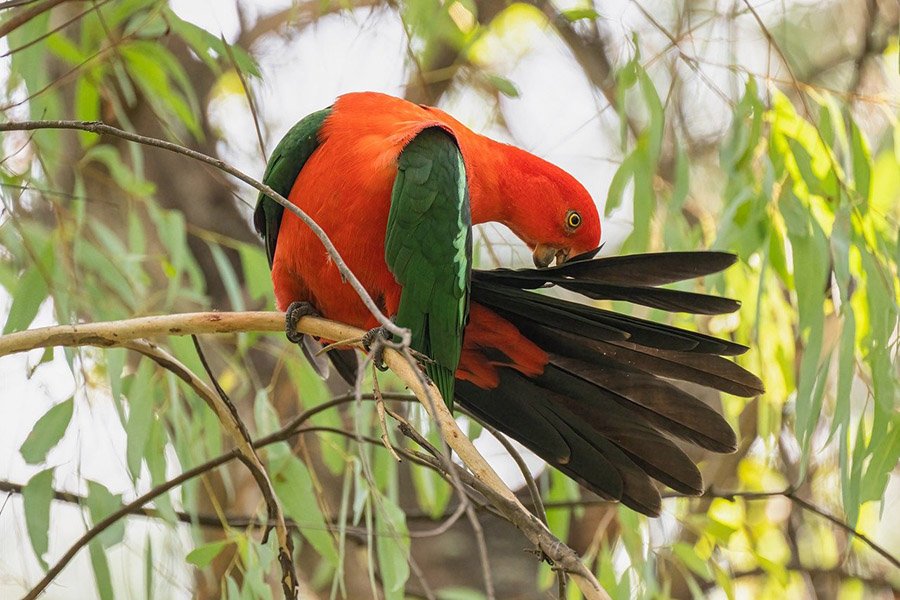
- Scientific Name: Alisterus scapularis
- Size: 16-18 inches (42-46 cm)
- Lifespan: Up to 25 years
- Where Found: Eastern Australia
Australian King Parrots are distinctive and vibrant, with adult males displaying a bright red chest and head, contrasted against a deep green body. The females and young, on the other hand, have a green head and body, with a hint of red underbelly and tail.
These parrots prefer wetter forests such as rainforests or eucalyptus groves, where they feed on seeds and fruits. Despite their bright colors, they are often hard to spot among the trees as their green body provides excellent camouflage.
In captivity, Australian King Parrots are known to be relatively quiet and docile, making them desirable pets. However, they are not as adept at mimicry as some other parrot species.
Did you know? The Australian King Parrot is one of the few species where males and females are distinctly different in color. This phenomenon is known as sexual dimorphism.
What Makes Parrots Red?
From fiery reds to maroon hues, parrots exhibit a stunning array of red coloration. But what gives them this captivating appearance?
The red color in parrots comes from a type of pigment known as psittacofulvins. This pigment is unique to parrots and gives them their vibrant red, yellow, and orange colors. Unlike most other birds that get their color from their diet, parrots can actually produce these pigments themselves.
Another factor contributing to the bright red colors is the structure of the feathers themselves. Similar to how they can manipulate light to appear blue or green, parrots can also create a more intense red color through light scattering.
It’s also worth noting that parrots are not just beautiful to look at – their colors serve practical purposes too. Bright colors can signal health and vitality during mating season, helping parrots attract a mate. At the same time, these colors can help parrots blend into their surroundings and avoid predators.
Final Thoughts
The world of red parrots is truly a spectacle to behold, offering us a captivating array of species each more stunning than the last. From the fiery feathers of the Scarlet Macaw to the vibrant hues of the Australian King Parrot, these birds remind us of the beauty and wonder that nature has to offer.
Whether in the wild or in the comfort of a loving home, red parrots continue to captivate and fascinate us with their beauty and charm.
